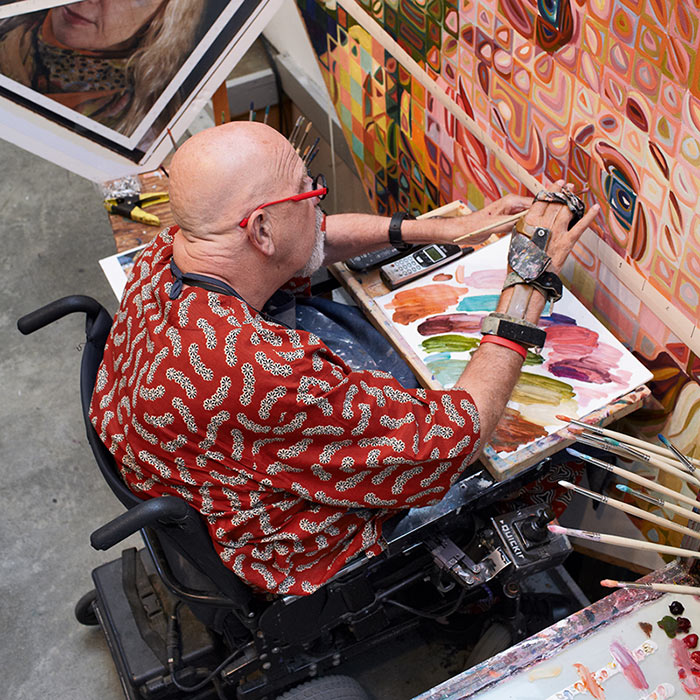Studio Visit: Material Lust
The rebellious design duo translates hidden symbols and philosophies into sculptural, unsettling furniture

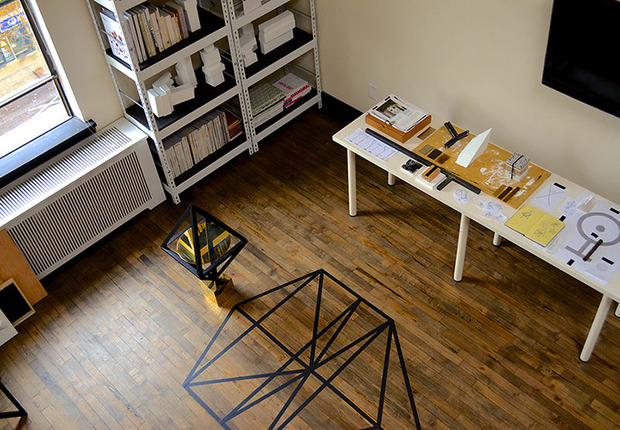
Located on the invisible line that divides the East Village and Gramercy is the home and studio of Lauren Larson and Christian Swafford, the two young artists behind provocative design firm, Material Lust. Upon entering the loft, visitors are immediately confronted by one of Swafford’s photography experiments—a series of quick snaps taken after shocking some supportive friends with a small taser. Darkly humorous and visually intriguing, these portraits set an ambience that is only enhanced by the small table in the foyer that’s garnished with a couple of customized Material Lust brass knuckles that the duo decided to make for fun. “We were going to bring a set for Lauren’s brother, but we decided it wasn’t something we couldn’t pack in our carry-on,” explains Swafford.
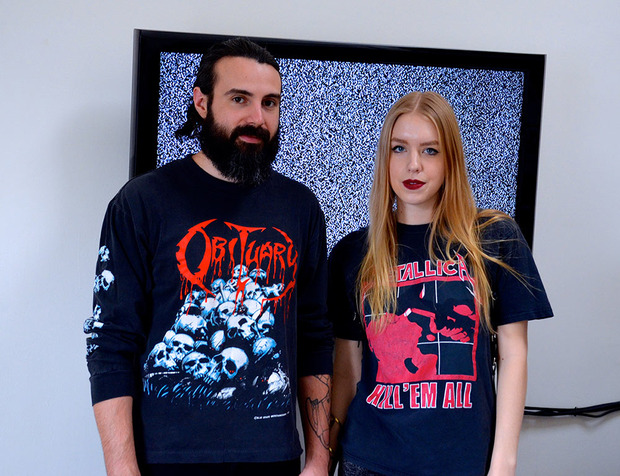
Almost entirely monochromatic, the vaulted apartment operates as a living mood board for the designers. Experiments of scale models dot the room, hinting at the couple’s obsessive—almost scientific—process. Eerily organized, the towering shelves of books and supplies make one acutely aware of the requisite duality of the space and its furniture, serving as both a sanctuary and a workshop. Hostile details, like the two black nooses that hang from an exposed pipe seem to illustrate perfectly the designers’ sinister aesthetic. The entire spectacle is reminiscent of a white cube gallery, and one can’t help but feel like there’s something missing. Larson and Swafford, clad in black, are the last piece of the puzzle.
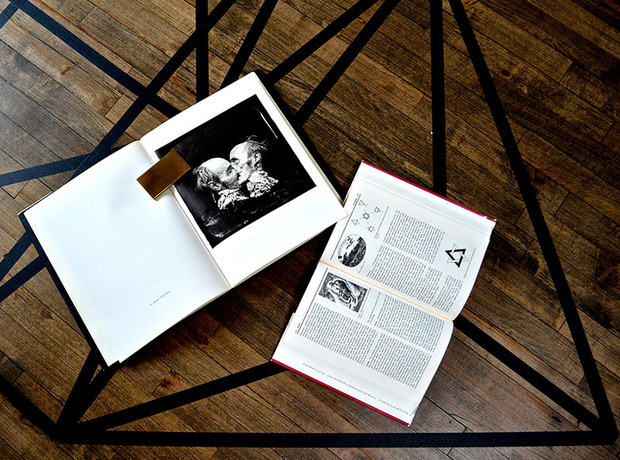
Two of a kind, Larson and Swafford share a creative spirit thanks in part to their artist mothers, who fed them a steady diet of gallery openings, documentaries and art history; and in part because of their training at Parsons The New School of Design where they both studied design. Brought together after graduating, the two developed their own aesthetic language derived from their fine art backgrounds and rebellious attitudes. “The reason we look at artists instead of designers, is we feel like when you talk about trends, artists are always ten steps ahead of what is coming. It goes art, then fashion—because a fashion designer may put out a collection that is very ‘on trend’ but they always know what the trend is going to be two or three years down that road,” explains Swafford. “We feel like artists don’t knowingly do this but they really set the trends. The fashion designers are looking to them, and then once it happens in fashion, the furniture designers get it.”
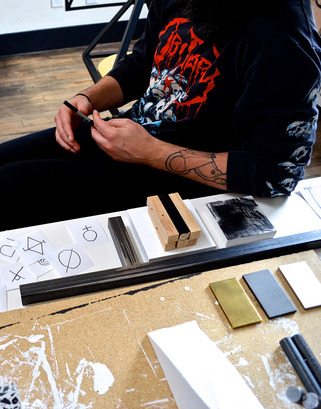
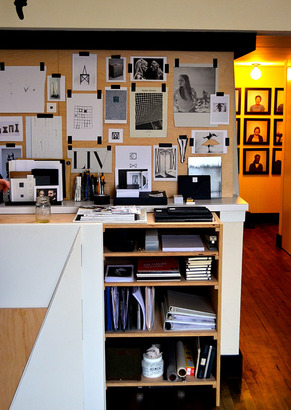
“For example there is such a big Memphis trend right now, and everyone is regurgitating the same thing,” interjects Larson, who works as Design Director at Grey Area. “We try to steer away from looking at other designers, because we don’t ever want to be influenced by something and then accidentally copy it. So, whenever we are doing something we try to insulate ourselves before we go out and check it against our peers.” Forging their own path away from the hand-crafted monikers of the Brooklyn makers, the pair translates their reactionary philosophies into striking, high-end furniture.
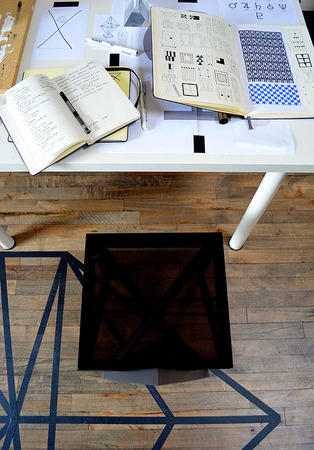
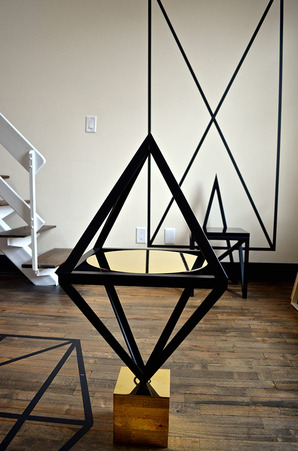
Almost weapon-like, the foreboding angles of the duo’s latest invention, the Alchemy Table, illustrate perfectly the uncomfortable minimalism and hidden symbolism that characterizes their work. Constructed from the triangular symbols that the alchemists used to depict the major elements, the table is the third piece in their “Geometry is God” series. “We are fascinated by Pagan symbolism and all those ancient geometries and the way they would represent different elements and nature. It’s artwork before art was even thought of as art,” explains Swafford. “With this series, we have been exploring how we can reinterpret these markings without losing the potency of their primitive aesthetic. How do you make a chair that is symbolically dense? We try to do that.”

Polished and stark, the cast collection feels more sculptural than functional, however the scaling makes one second guess themselves. Like the alacritous compositions of the Futurists in the context of the careful Impressionists, there is something extremist about Material Lust’s forms, and it is this unsettling effect that the designers seem to covet most. “People either love our work or are immediately uncomfortable, but that’s okay because we want to cause a reaction. We never want to design a chair that someone just says, ‘Oh that’s pretty,'” says Larson. “Like any artist, we want our pieces to feel unlike anything else out there.”
Photos by Kat Herriman

